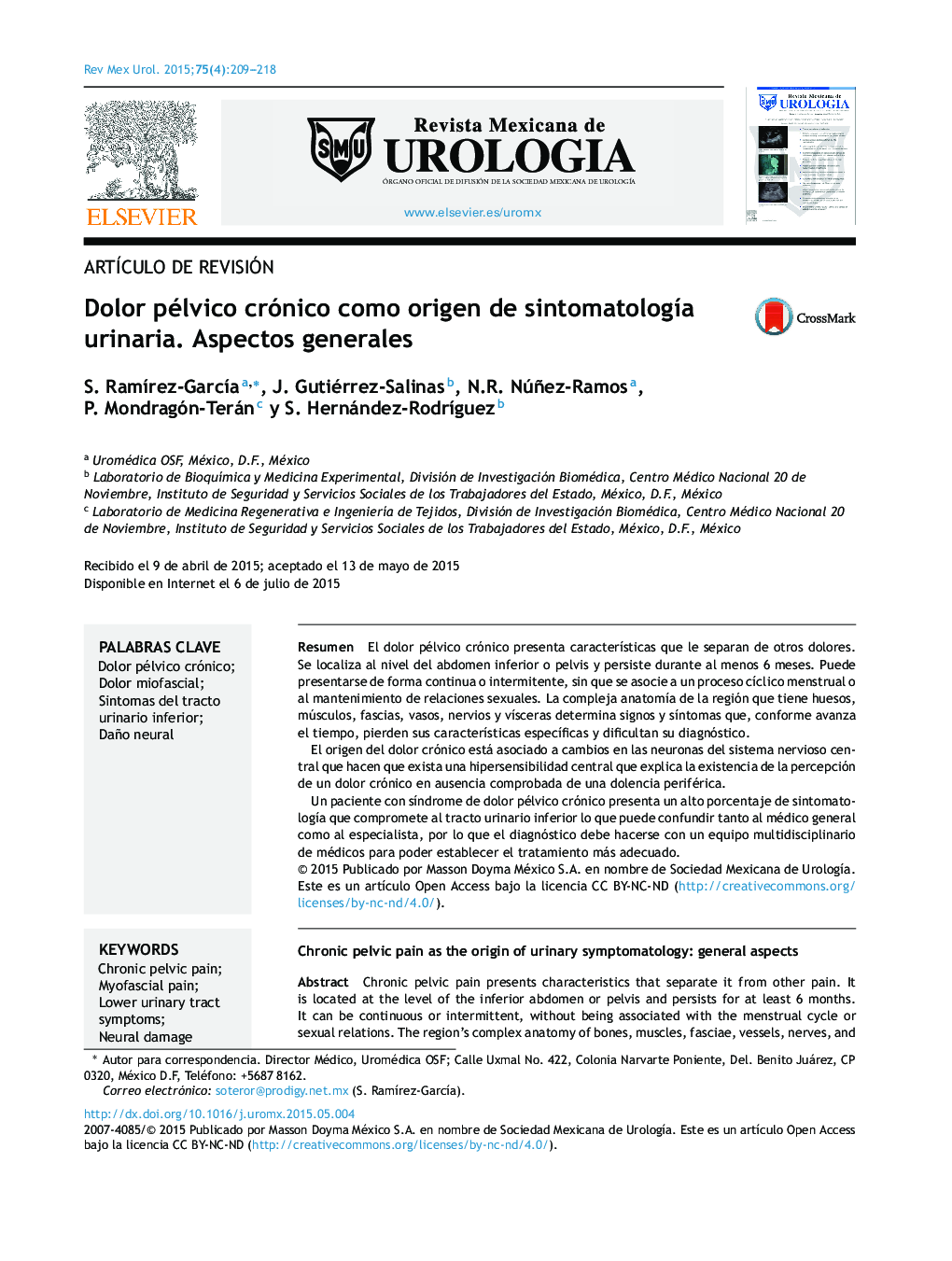| Article ID | Journal | Published Year | Pages | File Type |
|---|---|---|---|---|
| 4274349 | Revista Mexicana de Urología | 2015 | 10 Pages |
ResumenEl dolor pélvico crónico presenta características que le separan de otros dolores. Se localiza al nivel del abdomen inferior o pelvis y persiste durante al menos 6 meses. Puede presentarse de forma continua o intermitente, sin que se asocie a un proceso cíclico menstrual o al mantenimiento de relaciones sexuales. La compleja anatomía de la región que tiene huesos, músculos, fascias, vasos, nervios y vísceras determina signos y síntomas que, conforme avanza el tiempo, pierden sus características específicas y dificultan su diagnóstico.El origen del dolor crónico está asociado a cambios en las neuronas del sistema nervioso central que hacen que exista una hipersensibilidad central que explica la existencia de la percepción de un dolor crónico en ausencia comprobada de una dolencia periférica.Un paciente con síndrome de dolor pélvico crónico presenta un alto porcentaje de sintomatología que compromete al tracto urinario inferior lo que puede confundir tanto al médico general como al especialista, por lo que el diagnóstico debe hacerse con un equipo multidisciplinario de médicos para poder establecer el tratamiento más adecuado.
Chronic pelvic pain presents characteristics that separate it from other pain. It is located at the level of the inferior abdomen or pelvis and persists for at least 6 months. It can be continuous or intermittent, without being associated with the menstrual cycle or sexual relations. The region's complex anatomy of bones, muscles, fasciae, vessels, nerves, and viscera determines the signs and symptoms that, with the passage of time, lose their specific characteristics and make diagnosis difficult.The origin of chronic pain is associated with changes in the neurons of the central nervous system; they result in a central hypersensitivity that explains the perception of chronic pain in the confirmed absence of a peripheral pathology.The patient with chronic pelvic pain syndrome presents with a high percentage of symptomatology involving the lower urinary tract. This can confuse both the general physician and the specialist, and thus a multidisciplinary team of physicians should make the diagnosis so that the most adequate treatment can be established.
